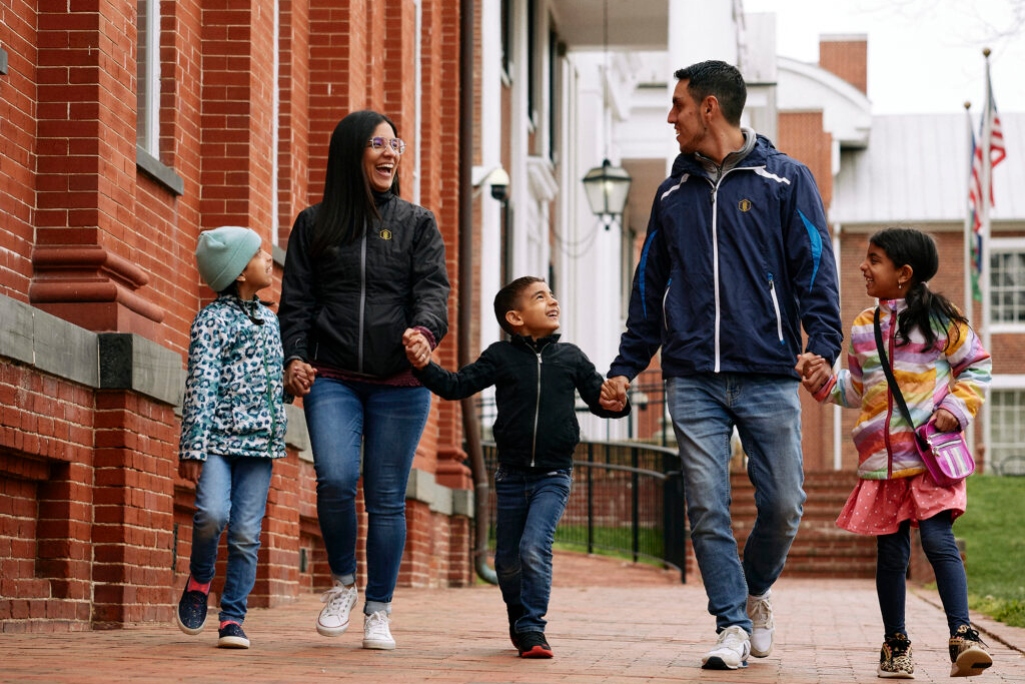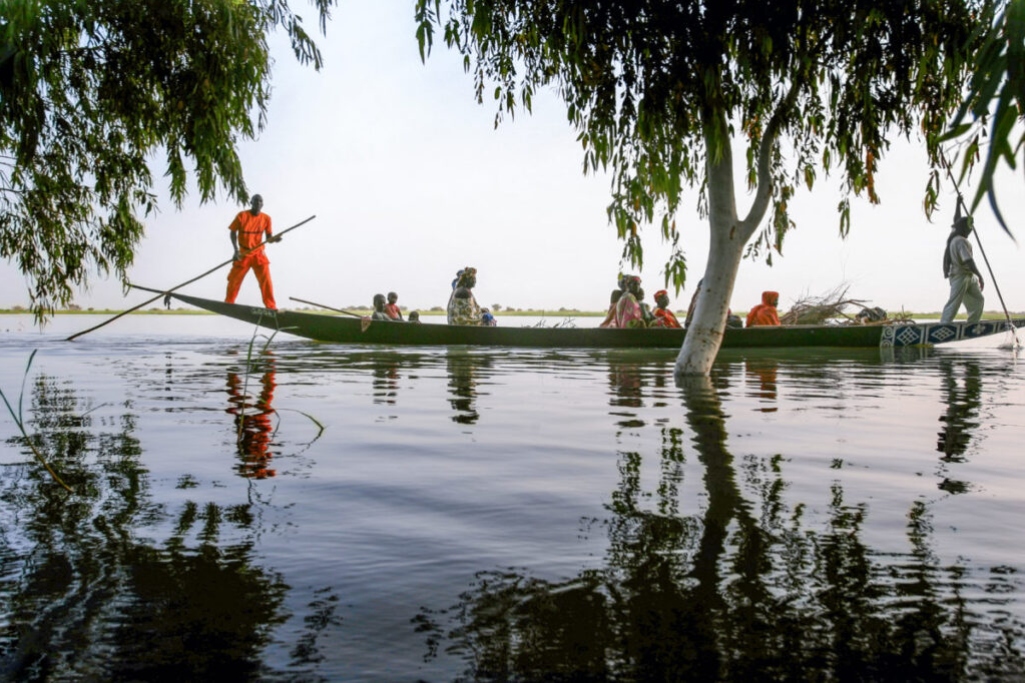
Making Jesus known is a family affair for Jefferson and Carol Hernández. In 2020, Hernández, his wife and their three children started Iglesia Campo Blanco in Sterling Virginia. Since then, they’ve seen so many of their Hispanic neighbors give their lives to Christ, that now their children are asking, “When can we plant another church?”
(EDITOR’S NOTE – This year’s Annie Armstrong Week of Prayer for North American Missions is March 3-10. The offering provides half of the North American Mission Board’s annual budget, and 100 percent of the proceeds go to the field. The offering is used for training, support and care for missionaries and for evangelism resources. This year’s goal is $75 million.)
STERLING, Va. (BP) – There was no brainstorming, no focus group, no research that went into it. Jefferson Hernández had not given a moment’s thought to what he and his wife Carol would call their new church in Sterling. Not until one day, when he was unexpectedly asked the name of his new church plant, and Jefferson said the first thing that popped into his head.
“I’d just read in John 4 where it says the fields are white unto harvest, and the phrase ‘Campo Blanco’ crossed my mind,” Hernández says. “So right then and there, that was the name given to the church – Campo Blanco, which in English is ‘White Field.’”
He could not have come up with a better name if he’d tried. The Hernández family lives in Loudon County, Va., one of the wealthiest and fastest-growing counties in the U.S. Lured by the promise of high-paying jobs, Loudon County has now become a popular landing spot for tens of thousands of immigrants from Latin America.
“We are seeing a lot of people from Bolivia, Peru, Colombia and especially Central America,” Hernández says. “This county, which is one where people make the most money, has become an attraction for immigrants who’re looking for a better future for themselves and their families.”
God called the Hernández family to follow all those immigrants to Loudon County, the county Jefferson now calls “White Field,” to show them what a “better future” really looks like. And that calling – to plant a church that would make Jesus known – was a calling Hernández never would’ve imagined for himself.
Hernández had always wanted to come to the United States. But when he was a boy growing up in Cali, Colombia, his American dream was not what you might think.
“When I was growing up, drug cartels were popular in Colombia,” he says. “From a very young age, I was trained to rob banks. My dream was that once I started participating in those robberies, I would take all the money I could, buy my first kilo of cocaine and send it to the United States. In my mind, I was like, ‘I’m going to fill up the United States with cocaine.’”
Fortunately, sometimes dreams change.
One night in 2008, shortly after Hernández had come to live in the U.S., he and his girlfriend, Carol, visited a Hispanic church in the suburbs of Washington, D.C. It was a first for Hernández. He’d never attended an evangelical church before.
“I was a little afraid I was going to encounter some weird things,” he says. But when “the man in the tie” got up to speak, Hernández heard something completely unexpected.
“To me, religion had never made any sense,” he says. “But the man in the tie was very clear. He said because Jesus paid for all the bad things I’d done, there was hope for someone like me. I left the church thinking about that. And several days later, I got on my knees and asked God to forgive all my sins.“
Hernández’s girlfriend Carol was not a follower of Jesus at the time, and at first, she doubted the sincerity of his conversion.
“I thought he was crazy. But he told me, ‘No, I’m in love with Jesus, and He’s changed my life.’ It was weird for me to hear that from him, and that caught my attention, so I kept going to church with him,” she said. “Sometime later, I gave my life to the Lord too.”
After several years of discipleship, training and prayer, the “man with the tie” and the church he pastors, Iglesia Biblica Bautista Emmanuel Manassas, sent Hernández and Carol out to plant a new church in Sterling, Va. It was an assignment that, eventually, turned out to be not as difficult as they first thought.
“Our church, it was our sending church,” Hernández says. “They’d been preparing us for a long time. But still, when we were commissioned, we didn’t know exactly where to start. So we just started going for prayer walks down the streets of Sterling, and whenever we met people, we’d stop and witness to them. Some of them responded positively, so we started a Bible study with them. That’s where it all began.”
Now, four years later, the work has grown. The church that’s now called Iglesia Biblica Campo Blancofills up the fellowship hall of a local Anglo church. Seventy percent of the attendees met Christ right there at the church plant. And there are plans to launch a second work in another nearby community.
That’s how Hernández knows that naming his new church “White Field” must have been divinely inspired – because there’s no better description of the community that surrounds it.
“In the past, I thought, ‘Why start new churches?’” he says. “But I’ve learned that here, there’s the potential to start a church on every block, and still, we’d need more. These fields really are white and ready for harvest. I never would’ve thought I’d be here doing this, but now, my dreams have changed. Instead of thinking about filling up the United States with cocaine, now my desire is to fill it up with the Gospel.”
The Annie Armstrong Easter Offering® provides half of NAMB’s annual budget, and 100 percent of the proceeds go to the field. The offering is used for training, support and care for missionaries, like Jefferson and Carol Hernández, and for evangelism resources.
(EDITOR’S NOTE – Tony Hudson writes for the North American Mission Board.)


